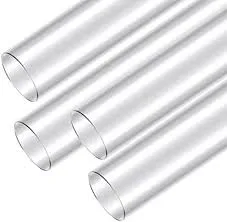ഡിസം . 28, 2024 10:21 Back to list
drain pipe fittings
Understanding Drain Pipe Fittings Essential Components for Efficient Drainage Systems
Drain pipe fittings are integral components in the plumbing and drainage systems that ensure the effective transportation of wastewater and prevent potential leaks and blockages. Understanding the various types of fittings and their functions is essential for both homeowners and professional plumbers. In this article, we will delve into the different types of drain pipe fittings, their uses, and their importance in maintaining a functional drainage system.
Types of Drain Pipe Fittings
1. Elbows Elbow fittings are crucial when a pipe needs to turn at an angle, typically 90 or 45 degrees. These fittings allow for the redirection of flow within the drainage system. They are commonly used in tight spaces where straight runs are not feasible. A well-placed elbow can minimize the risk of clogs by facilitating a smoother flow.
2. Tees Tees are fittings that allow a pipe to branch off in two directions. They are shaped like the letter 'T' and are useful for connecting a new line to an existing drainage system. This versatility makes tees vital in both residential and industrial plumbing applications.
3. Wyes Similar to tees, wyes (or Y fittings) are used to connect pipes but do so at a less aggressive angle, generally around 45 degrees. This design is particularly beneficial for maintaining a fluid flow and minimizing turbulence, which can lead to blockages. Wyes are often favored in larger drainage systems or where increased flow efficiency is required.
4. Couplings and Adapters Couplings are straight fittings that connect two pieces of pipe of the same size, ensuring a watertight seal. Adapters, on the other hand, allow for the connection of pipes of different sizes or materials. Utilizing the correct coupling or adapter is crucial to maintain the integrity of the drainage system and prevent leaks or failures.
drain pipe fittings

5. Caps and Plugs Caps and plugs are used to close off the ends of pipes. Caps are typically placed on the end of the pipe, while plugs can fit inside the pipe. These fittings are essential during maintenance or when a section of the drain line undergoes repairs, ensuring that the system can be temporarily sealed off without disrupting service.
Importance of Quality Drain Pipe Fittings
Investing in quality drain pipe fittings is essential for several reasons. First, they play a vital role in maintaining the hygiene of a plumbing system by preventing leaks and contamination of clean water sources. Poor-quality fittings can lead to frequent leaks, resulting in costly repairs and water damage over time.
Secondly, the durability of fittings affects the longevity of the entire drainage system. Quality materials can withstand environmental stresses, resist corrosion, and accommodate the thermal expansion of pipes, ensuring that they function effectively for many years.
Lastly, proper installation of drain pipe fittings is critical. A poorly installed fitting can create weak points in the drainage system, leading to clogs and the potential for backflow, which can pose serious health risks. Thus, understanding how to select and install the right fittings is paramount for any plumbing project.
In conclusion, drain pipe fittings are crucial components that ensure the efficient functioning of drainage systems. By familiarizing yourself with the various types and their applications, you can make informed decisions when it comes to plumbing installations and repairs. Whether you’re a homeowner tackling a DIY project or a professional plumber, understanding the nuances of drain pipe fittings will ultimately lead to a more reliable and effective drainage system.
-
High-Precision PVC Rigid Sheets for Vacuum Forming | AI-Optimized
NewsAug.05,2025
-
Durable PVC-M Water Supply Pipes | 60-Year Life
NewsAug.04,2025
-
Premium HDPE Water Supply Pipes: Durable & Leak-Proof
NewsAug.03,2025
-
Premium PVC-M Water Supply Pipe - Durable & Efficient
NewsAug.02,2025
-
HDPE Drainage & Irrigation Pipe - Durable, Efficient Solutions
NewsAug.01,2025
-
Premium PVC Transparent Pipe: Durable & Clear Solutions
NewsJul.31,2025

